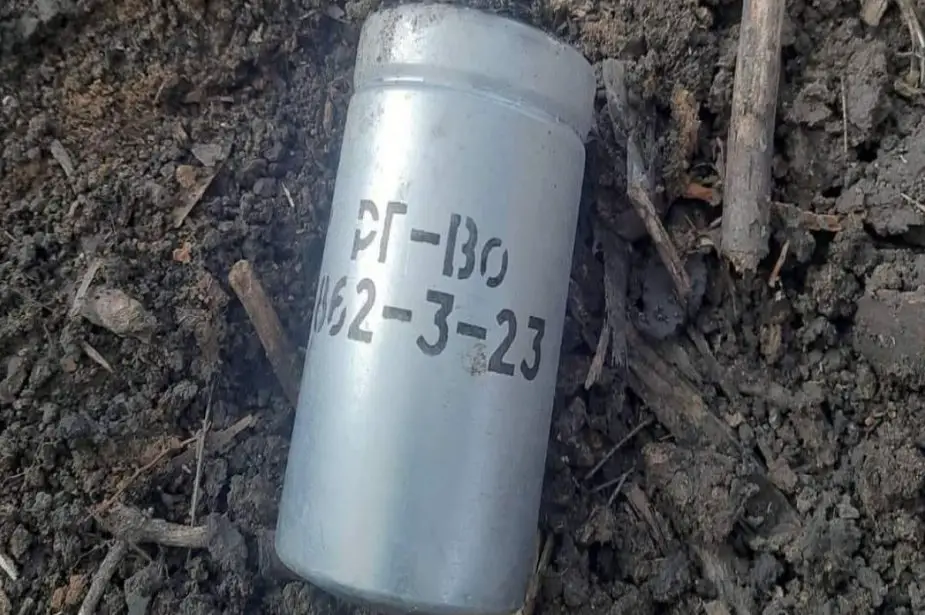- Army
- Conflicts in the world
- Israel - Iran conflict 2025
- Pakistan - India Conflict 2025
- Russia Ukraine War 2022
- Libya conflict day by day
- HAMAS - Israel War 2023
- Operation Serval in Mali French Army
- Sangaris operation Central African Republic
- Sangaris opération militaire République Centreafrique
- Ukraine - Russia conflict
- Syria conflict news
- Defence & Security Industry Technology
- Armies in the world
- Analysis Defense and Security Industry
- Conflicts in the world
- Navy
- Air
Russian soldiers intensify their use of chemical agent to reduce Ukraine strongholds
Dmytro Lykhoviy, head of the public relations department of the Tavria military unit, revealed disturbing details, stating that Russian forces have increasingly employed grenades equipped with suffocating and tear gas, delivered via drones. Lykhoviy's disclosure of approximately 50 such drops within a week, with 15 recorded in just the past day, raises grave concerns about the potential humanitarian and security implications of Russia's actions. The development underscores heightened fears surrounding the use of chemical weapons in conflict zones and prompts urgent calls for international scrutiny and response.
Follow Army Recognition on Google News at this link

RG-VO grenade found of the battlefield (Picture source ukrainian minsitry of defense )
Regarding UXO ( Unexploded Ordnance) found in warzone, two types of chemical hand grenades are used by Russian Soldier, the K-51 and the KG-VO
The Russian K-51, a CS gas, riot-control, striker-release, base-emission, hand-grenade used to control counter-insurgencies and other tactical operations. The K-51 is filled with variable weights of an irritant agent, which is commonly stated to be the Chemical Warfare Agent (CWA) designated CS (2-Chlorobenzalmalononitrile). The K-51 uses the K-510 fuze, which allows 16-second burns of thick CS smoke.
RG-VO hand grenade is less known. composed of CN ( chloroacetophenone) agent. This gas is traditionally used for riot control, a bit more powerful than CS gas
CS (ortho-chlorobenzylidene malononitrile) and CN (chloroacetophenone) are both types of tear gas commonly used for riot control and crowd dispersal. They're considered less-lethal agents designed to temporarily incapacitate individuals by irritating the eyes, mouth, throat, lungs, and skin. The specific amount of these substances required to be considered "dangerous" can vary depending on several factors, including the concentration of the chemical, the form it's in (e.g., powder, liquid, gas), the mode of delivery (e.g., grenade, spray), environmental conditions (e.g., wind, indoor vs. outdoor), and the health and susceptibility of the individuals exposed.
Generally, these agents are intended to be non-lethal when used correctly. However, high concentrations in enclosed spaces or prolonged exposure can lead to more severe health effects, including respiratory distress, chemical burns, and in rare cases, death.
It's important to note that the use of these chemicals is governed by various laws and regulations in different countries, which can include guidelines on permissible concentrations and scenarios for their use.
For security forces and law enforcement agencies, training and guidelines emphasize minimizing exposure and using the lowest effective dose to achieve compliance or disperse a crowd. The misuse or overuse of tear gas can lead to significant health risks and ethical concerns, making it crucial for these tools to be deployed judiciously and within the bounds of local and international law.
According to BMJ Military Health, the lethal concentration of the most dangerous agent, CN, is 11 mg-min/m³. According to Andriy Rudik, a spokesperson from the Centre for Research on Trophy and Advanced Weapons and Military Equipment of the General Staff of the Ukrainian Armed Forces, this concentration is equal to “Approximately 70 drops of such gas are sufficient to kill an adult person,”. Rudik added that in December 2023, a total of 81 cases of Russian grenades containing poisonous substances were recorded. According to open-sourced videos, this kind of grenade is dropped with FPV (first-person view) drones during or right before assaults on the Ukrainian position.
Defense News March 2024


























